- Home
- Bill Bryson
Icons of England Page 10
Icons of England Read online
Page 10
Ploughing engages a man in many ways, although surprisingly strength is the least of it: horses do the heavy pulling and the ploughman has no need of pushing, for a finely tuned plough will glide through the soil with the ease of a wing through the air. The achievement of this sublime state, though, rests on experience. I counted thirteen different adjustments on a simple plough, each working together and making the setting of a plough as interactive as the tuning of a piano. But when all is correct, each nut perfectly tightened and every setting precisely made, then there is the possibility of a symphonic day behind the plough. All that can break the harmony are the horses.
Working horses are no slaves. They have minds of their own, and imaginations. If they get it into their heads that it is time for the midday break even though it is not yet ten o’clock, every furrow will be a fight as the ploughman asserts his will over theirs. Sometimes the fight can last all day. For devilment, a horse will deliberately lean against his mate and push him out of the furrow, causing the ploughman to curse. A sharp rebuke will bring him back to his senses, for a while, before his mischievousness finds another way to express itself.
Then there are the easy times when to plough with horses is to undertake a day-long conversation. A horse needs to hear you and know that you are there – his blinkers prevent him from seeing you. But how does this communication work? I have often called in a gruff voice, ‘Get yo’self over, old hoss’ and watched an old faithful take a step sideways, as asked, but I have no idea why he did it. But he certainly understood what I meant.
People have asked me if ploughing all day is lonely. How can it be? I talk more in a day’s ploughing than in normal life, and to my remarks, projected the length of the reins, I seem to get answers, but I can’t tell you what they are.
It is a mysterious business, to plough the land with horses. Those who have mastery of it are worthy of kingly respect.
CROSSING OVER
Leo Hickman
on cattle grids
‘D-D-D-D-D-D-D-D-D.’ As a boy growing up in Cornwall, I loved the sound of cattle grids.
Each time I saw one looming in the distance I would wince and grit my teeth in expectation of the fact that our family car would pass over it at several clicks faster than was probably recommended. Even now, it is the sound that comes to mind when I think about the countryside. I rank the percussive reverberations of rubber passing over metal bars at speed up there alongside the evocative call of the wood pigeon and the badger’s bark.
And it seems I’m not alone. I smiled when I learnt recently that the sound had been judged important enough to be recorded and placed into the British Library’s archives as an official soundscape – ‘a sound that is pertinent to a place’ – of Dartmoor. It delights me to know that, in decades to come, students will stumble across the digital recording of cars passing over the cattle grid between Princetown and Two Bridges.
What I really love about the sound, however, is what it symbolizes. It marks the border between a countryside that is tamed, neat and comforting, and one that is wild, tousled and close to danger. Cattle grids often tell us when we are entering common land – those fence-free stretches of common grazing that form some of England’s most stunningly beautiful parcels of land. Cross a cattle grid and you can rest assured that, within a few minutes, a sublime moorland vista will present itself to you: a view of plaster-smooth undulations topped with granite, which have been maintained by countless generations of nibbling sheep, ponies, rabbits, deer and cows.
Cattle grids also represent ingenuity at its simplistic best. They perform that rare double act: an invention that offers perfect functionality – preventing animals straying while removing the bother of stopping a vehicle and opening a gate – without tainting, hindering or damaging its surroundings. Animals are instinctively wary of them, to such an extent that on some highways in the US, black and white stripes are painted on road surfaces to look like a grid to trick animals into not crossing them. Children are also unnerved enough by their sight to approach them with caution. (I always feared that I would get my leg stuck as I tentatively crossed them by foot, and that the local farmer would then need to fetch a saw to perform an amateur amputation in order to free me.)
For me, however daunting a prospect they appear, they will always be part of the landscape. But will evolution see their demise? It does seem some animals are trying cunning new ways to overcome these metal bars. In 2004, villagers in Marsden on the Yorkshire moors reported seeing hungry sheep lying on their backs and rolling across cattle grids so they could reach fresh pasture. ‘Sheep are quite intelligent creatures and have more brainpower than people are willing to give them credit for,’ responded the National Sheep Association to the news. If only we could all live in fear of cattle grids for ever – then this soundtrack to our countryside might never fade.
THE TREE MUSEUM
Simon Hoggart
on the National Arboretum
‘They took all the trees
Put ’em in a tree museum
And they charged the people
A dollar and a half just to see ’em’
JONI MITCHELL SANG THAT in ‘Big Yellow Taxi’, a song about cherishing what you’ve got. And she’d be right about tree museums, except for the fact that, unlike a normal museum, an arboretum doesn’t take its stock away from anywhere else. It creates its own, rather as if someone in a back room of the British Museum was turning out a constant supply of Saxon gold crowns and Roman amphorae. And as for cherishing what we’ve got, it would be hard to think of a better example than the National Arboretum at Westonbirt, just south-west of Cirencester. It is stunning, sensational, absolutely gorgeous: something which should delight every person in the country.
It is also vast, being six hundred acres and 1.7 miles from end to end. You can walk around it, but if you want to get the full flavour of the place you’ll need to spend at least a day there, or rather several days during the different seasons. There are many other tree museums in the world – including the fine United States National Arboretum in Washington, DC – but I doubt if there are any as magnificent. Curiously, though some 350,000 people visit every year, it’s nowhere near as famous and celebrated as many other national treasures.
One reason for the arboretum’s captivating charm is that its founder, Robert Stayner Holford, was more interested in aesthetics than science. He inherited the estate, with Westonbirt House (a sort of oversized folly which is now a girls’ boarding school), from his father in 1839. He also scooped a vast sum of money to go with the land. Holford was influenced by the fashion of the Picturesque movement and for bringing back rare and exotic plants from all round the world, mainly from the British Empire.
The result is that Westonbirt is not just a collection of trees, but a gigantic and cunningly designed park, with wide avenues, rides, narrow walkways, but also vistas, glades and groves. The trees are planted not merely where they will fit, but where they will be handsomely juxtaposed with their neighbours. Consequently, every corner you turn brings a new delight – perhaps something dark and small, with just a flash of colour, nestling close to the edge of a wide expanse leading down to the house, so that you can imagine a party of men on horseback cantering to dinner in a Jane Austen novel.
And what trees are here! There are sequoias, cedars, dogwoods, magnolias, rhododendrons, pine trees of every kind, from an incredibly rare Australian specimen to ones which tower higher than city of London office blocks. The busiest time of year is autumn (though the arboretum is so big that even if the car park is full, the place never seems crowded), when the acers, or maples, are in full scarlet, orange and yellow leaf. Westonbirt is one of the very few places in Britain that can compare with the glory of the American fall. With the low October sun penetrating the vegetation, the trees themselves seem to be on fire. One immense plane, its great black branches arching up and round and down until they touch the ground, creates a sort of flaming bell jar, or perhaps an Aladdin’s cave in whi
ch the treasure lines every wall.
Lack of money and the exigencies of the Second World War meant that the family had to let go of the arboretum, and it has been run by the Forestry Commission ever since. Heed Joni’s words and enjoy them, but it seems unlikely that anyone is going to pave this paradise to put up a parking lot.
HOW THE OTHER HALF LIVES
Charlotte Hollins
on cattle
I OFTEN THINK IT would be nice to live the simple life of a cow. I would spend the day munching various grasses and herbs from organic pastures and sitting down to chew the cud. Then, if I fancied a quick tipple, I would wander to the spring-fed pool, stroll into the woodland for a bit of shade from the hot summer sun before returning to graze the pastures again. It’s all fairly tiring stuff!
My love of these domesticated ungulates stems from my earliest childhood memory. All I can remember is a vast landscape of grass, cows, and, of course, the inevitable cowpats. I grew up on an organic farm in rural Shropshire and was inspired by my late father, Arthur Hollins, whose passion for the English landscape knew no bounds. Arthur was an eccentric man with a true love for Mother Nature and everything she created. He was continually surprised and excited by the miraculous way in which nature just takes care of itself. And, every time I wander through our fields, so am I.
With its varied habitats, unpredictable wildlife and stunning topography, England spoils us. I love the fact there is always so much life to look at, wherever you are. I love the amazing way that each little bird, cow, small rabbit, each dungheap and tiny worm are all inextricably linked through the landscape; a landscape they have helped to create. I used to go for walks with my father and it wouldn’t take long before he was down on his knees pulling apart a cowpat. He would talk for hours about the efficiency of worms in creating food for his pasture out of animal manure, and about the millions of other organisms that live in that hidden and somewhat magical world beneath the surface of every landscape we see. For him, that was what made the landscape real, and why diversity in his grass pastures and a sustainable extensive grazing system for his cattle became so important. I love this world of hidden dimensions he introduced me to – and the fertility it provides. Without it, I wouldn’t be able to watch my wandering cows and escape from the characterless urban scene.
It is not hard to see the attraction of lazy days in the pastures. But you would be wrong to think of it as a mindless activity. For it is the intelligence of these gentle giants that really fascinates me. When a calf is asleep in the grass, visited by surrounding butterflies, the mother will go and graze in another area of the field. If she feels that danger may be approaching – such as an unsuspecting human she does not walk up to her calf, but will often walk in the opposite direction to attract attention away from her baby. It’s a great trick – unless you are a farmer trying to bring the cattle in for checking and need to find the calf.
Without a doubt, my favourite time of year is late spring, when the calves are born. As they are out all year, our cattle graze on nothing but grass and we are used to seeing them in the fields. But when the cows move into the summer water meadows and the calves arrive, there is nowhere in the world I’d rather be.
MY ISLAND
Elizabeth Jane Howard
on her river Waveney sanctuary
WHEN I WAS A child, I longed to be shipwrecked on an island. And I thought that to become the owner of one would be the height of exciting luxury. So when, about twelve years ago, I was able to buy the only island on the river Waveney which borders my meadow – it felt like a dream come true. It was no tropical paradise – there was a small rickety bridge for access, about an acre of willows that had been regularly coppiced for fencing, some ancient apple trees, a wilderness of reeds and brambles and the largest ash I’ve ever seen. But it was my paradise.
Much had to be done to turn this patch of land into a vibrant habitat. The bridge had to be rebuilt. We made a fair-sized pond, which was stocked with fish, and a canal that ran from the pond to the drain at the far end. We cleared the way for a path and made three bridges over the canal. We introduced about thirty oaks (my favourite tree), mostly English but one or two red – the water table is so high they grew at exhilarating speed. We planted wild crab apple and plum trees of various kinds, three witch hazels, a number of lilacs, buddleia and roses – Kiftsgate, Veilchenblau, Paul’s Himalayan musk and Bobbie James ramped up the old apple trees. There are half a dozen camellias, some viburnum, a tree peony, and the aconites, snowdrops, primroses, bluebells, Fritillaria meleagris and wild daffodils are steadily increasing.
We wanted to create something that could be enjoyed at all times of the year, with provision for as much wildlife as possible. There are now hedgehogs, grass snakes, rabbits, mice, camel-coloured frogs, reed warblers, thrushes, wood pigeons, sometimes a pair of owls, and a woodpecker. Some years we get butterflies attracted to the raucous mauve buddleia and a quantity of bees that love the ivy when it flowers. Ducks and a moorhen enjoy the pond and canal – the moorhen built her nest last year in the middle of a white waterlily that has assumed giant proportions. I also have a pair of mute swans called Bernard and Dora that have nested in various parts of the island and come in the summer to eat duckweed. Sadly, the first year Dora laid six eggs, they were stolen and the swans haven’t come to nest again. I wanted the island to be a safe environment for nesting and I do hope they return.
The island is only small but it has become a magic place for me. I walk around it every day and there is always something to notice and love. People say we plant trees for others to enjoy in future. I think this is true, but the pleasure of watching them grow from saplings to fine young trees is a reward in itself. There is also a great satisfaction in introducing plants that, if they are happy, will naturalize. Cowslips seem exotic to me because I was brought up in Sussex where there weren’t any, so to see them increasing every year is another plus. The arrival of the amazing and beautiful bee orchid was a thrill, but these flowers are mysterious and freakish in their behaviour; they will turn up one year and then disappear completely – and just as I have given up hope, appear somewhere quite different. They make plain the fact that wild flowers know what suits them, and cannot be tamed into putting up with conditions that garden plants often have to endure.
Of course, I have had failures. It is too wet for white foxgloves. Primulas do well, but the swans demolish them. Moles are a menace to the roots of young trees and mice eat the corms of anemones. But as my friend Ursula Vaughan Williams said, when she refilled a saucer of milk put out for a stray cat and found three slugs drinking from it, ‘There’s plenty for all.’ And I hope my island will continue to be that for everyone who, in future, owns or lives on it.
AGAINST THE ELEMENTS
Margaret Howell
on protean shapes
TWO PHOTOGRAPHS SIT ON my bookshelf. One shows the emaciated remains of Chanctonbury Ring after the 1987 storms wrecked its solid circle of beech trees. The other captures the skeletal wooden breakwaters of the east coast. Their imagery is similar – vertical, dark, abstract shapes in the landscape. Both are transformed from their original form into mysterious, beguiling objects.
An Iron Age fort dating from around the sixth century BC, ringed with a circle of beech trees planted in 1760, Chanctonbury Ring is a landmark that figured strongly in my childhood. Living on the edge of the North Downs as children, we would stand on a fine day and search the far horizon of the South Downs for its familiar outline. Many times we would climb the long chalk path and head for a picnic under the shade of its green leaves. Ancient, strong and dependable, it came to symbolize the Downs themselves, with their rolling lines and open skies.
But when, after the great storm, I saw the same trees stripped of branches, I recognized in their starkness the evocative power I now find in the solitary shapes scattered along our East Anglian beaches. Here too, on the edge, the landscape opens out. Reedbeds and saltmarshes merge with sea and sky; natural elements
work on abandoned man-made forms, and the sea throws up the unexpected. Here one finds new forms, eccentric in their isolation, yet more powerful because of it. One can see an elemental beauty: one stick emerging from a strip of water; the geometric shape of a rusty gun emplacement; a single buoy out at sea and the stark uprights of those ravaged groynes sloping down into the waves.
Continually submerged then exposed, the groynes themselves – once rough-cut and squared to defend the beach – have lost their cross-beams, and the surviving posts have eroded into grained pinnacles that are sensual to the touch. Knots have loosened and fallen away, leaving smooth-edged holes as pure as a sculpture. These are manmade defences moulded by the very forces they set out to challenge.
There are other evocative forms, that speak of past times and purposes. The spiky, rusty remnants and broken concrete slabs of a pillbox left over from the Second World War can sometimes be seen – at other times it remains hidden under the constant shift of shingle. Here, even the beach itself is continually smoothed and raked into precise, sculpted ridges by the pull of the North Sea. Like the South Downs, this area can be seen as a purely abstract landscape. Long lines and flat, uninterrupted areas of land, sea and sky, where the slightest change in light is noticeable, convey the same awesome emptiness.
I can see why I keep these photographs together, but what makes them so iconic? Is it that they speak of our common past – of a people who would shape nature, are defeated by her, but then try again? Are they emblems of time and change and the need for acceptance? Perhaps it is because they prompt memories of one’s own past? Or is it because of their sheer, fascinating beauty – not a romantic, quaint or picturesque beauty, but one that is clean, striking and, in every way, remarkable?

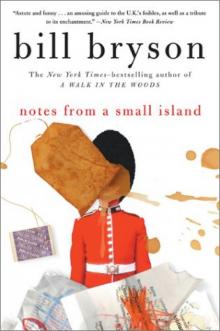 Notes from a Small Island
Notes from a Small Island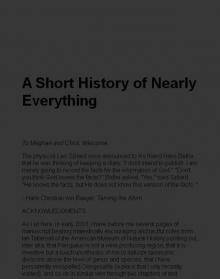 A Short History of Nearly Everything
A Short History of Nearly Everything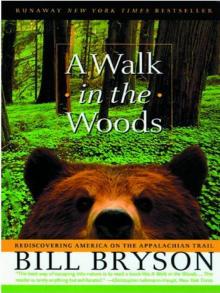 A Walk in the Woods
A Walk in the Woods I'm a Stranger Here Myself
I'm a Stranger Here Myself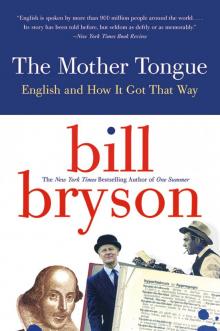 The Mother Tongue
The Mother Tongue Shakespeare
Shakespeare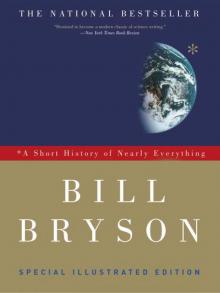 A Short History of Nearly Everything: Special Illustrated Edition
A Short History of Nearly Everything: Special Illustrated Edition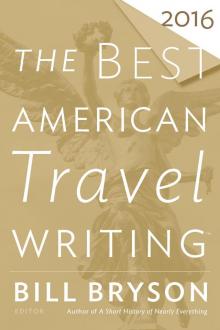 The Best American Travel Writing 2016
The Best American Travel Writing 2016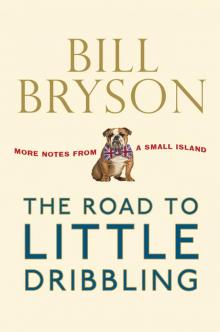 The Road to Little Dribbling
The Road to Little Dribbling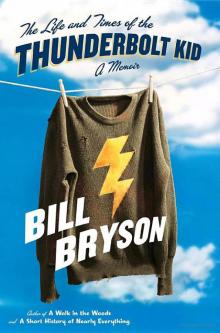 The Life And Times Of The Thunderbolt Kid: A Memoir (v5.0)
The Life And Times Of The Thunderbolt Kid: A Memoir (v5.0) Made In America
Made In America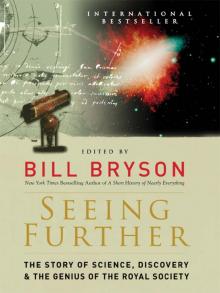 Seeing Further
Seeing Further Shakespeare: The World as Stage
Shakespeare: The World as Stage The Life and Times of the Thunderbolt Kid
The Life and Times of the Thunderbolt Kid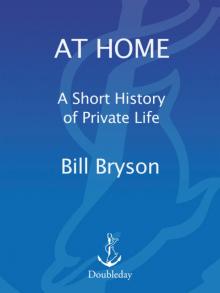 At Home
At Home Bryson's Dictionary For Writers And Editors (v5.0)
Bryson's Dictionary For Writers And Editors (v5.0) Neither Here Nor There
Neither Here Nor There Bill Bryson's African Diary
Bill Bryson's African Diary